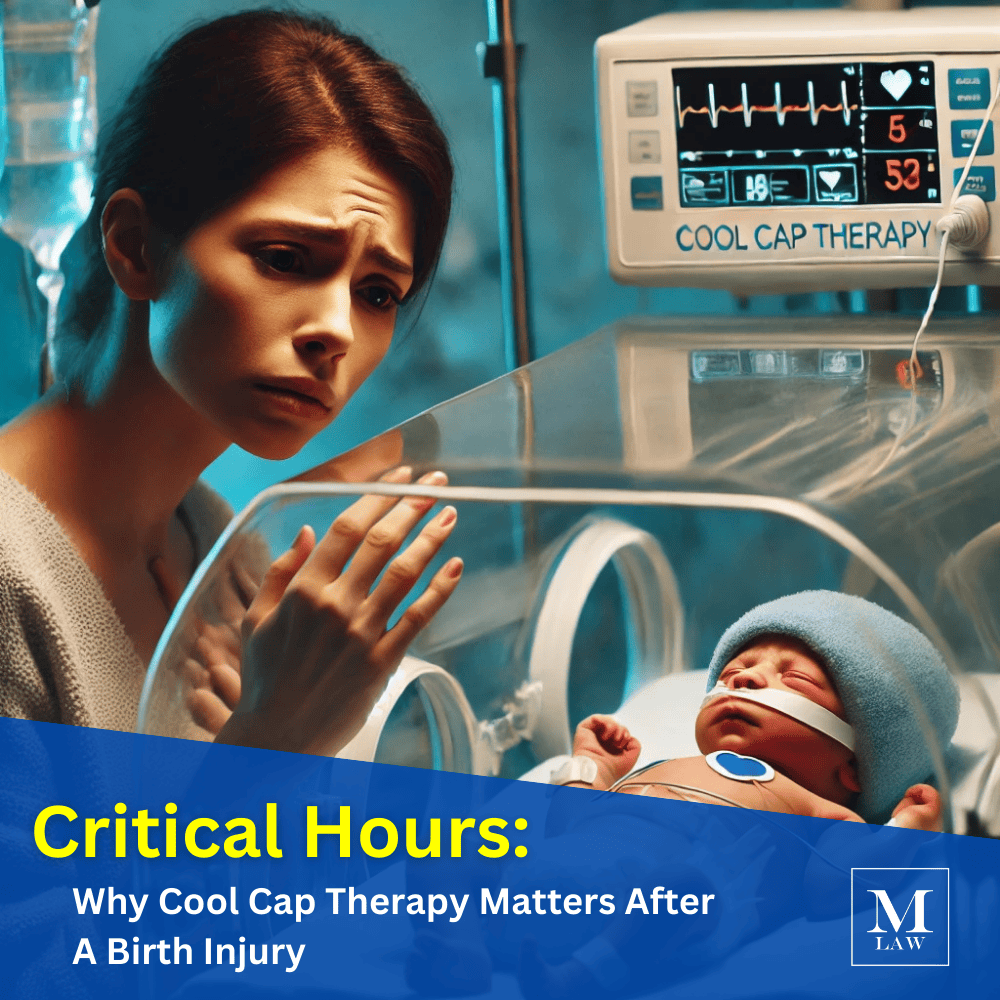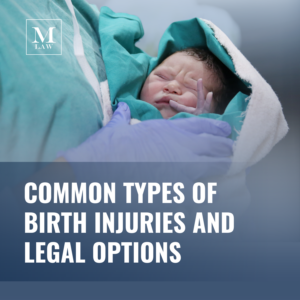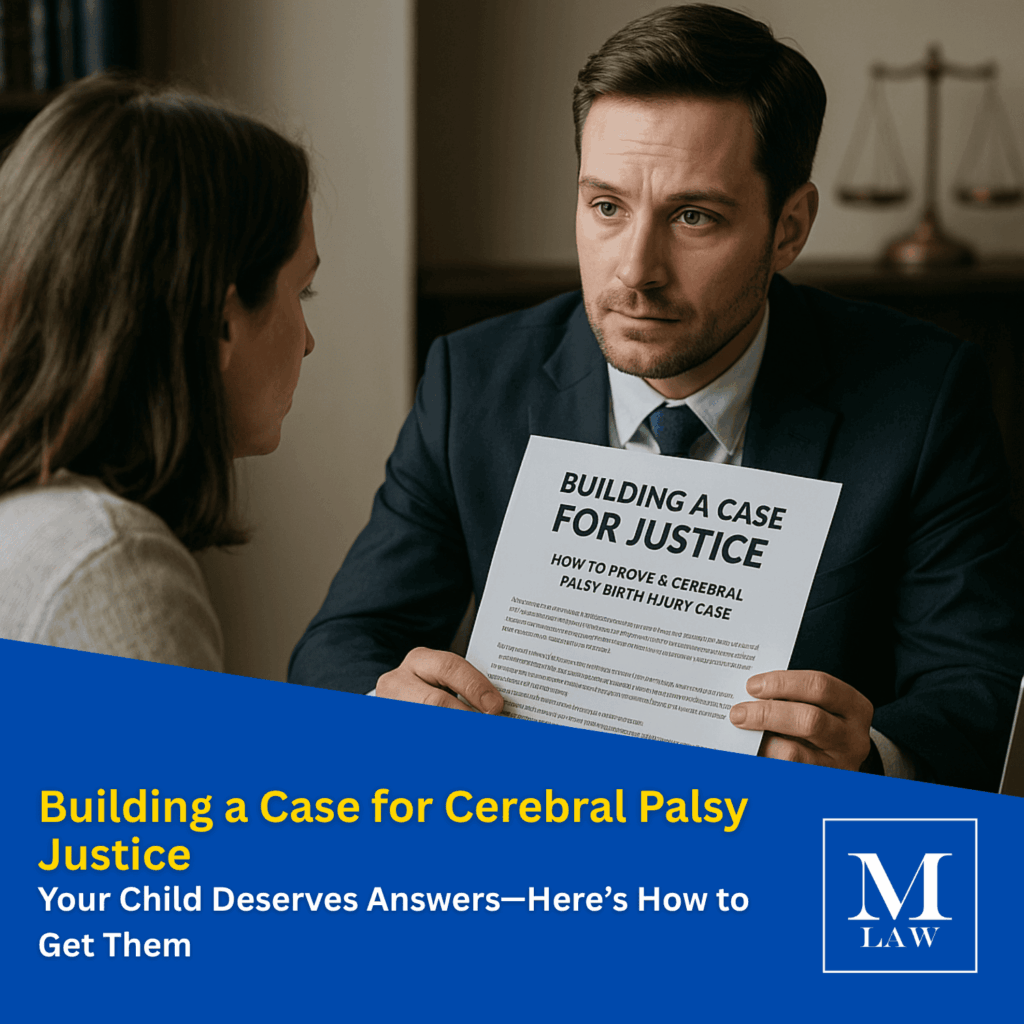A Lifesaving Treatment for Birth Injuries
Every parent dreams of a healthy baby, but complications during labor and delivery can put newborns at risk. One of the most serious conditions that can occur is Hypoxic-Ischemic Encephalopathy (HIE)—a type of brain damage caused by a lack of oxygen during birth. The good news? Cool Cap Therapy (also called neonatal therapeutic hypothermia) can help reduce the severity of brain injuries and improve long-term outcomes.
But what exactly is Cool Cap Therapy, and how does it work? As Medical Malpractice Lawyers in New York City, we handle many tough cases that involve preventable birth injuries that require Cool Cap Therapy and we are intimately knowledgeable from a legal standpoint of the consequences of such a birth injury.
In this article, we’ll explain how cooling therapy can protect the brain, when it should be used, and what happens if doctors fail to administer it properly.
What is Cool Cap Therapy?
Cool Cap Therapy is a groundbreaking brain-cooling treatment used to prevent further brain damage in newborns who experience oxygen deprivation at birth. This FDA-approved therapy works by lowering a baby’s brain temperature to slow down cell death and reduce swelling.
How It Works:
- A specialized cooling cap is placed on the newborn’s head.
- The cap circulates cold water to lower brain temperature to around 33.5°C (92.3°F).
- The baby remains in this controlled hypothermia state for 72 hours.
- After 72 hours, the baby is gradually rewarmed to normal body temperature.
Why is Cool Cap Therapy Important?
When a newborn experiences oxygen deprivation (birth asphyxia), the brain goes into distress. Without immediate intervention, brain cells begin to die, leading to lifelong conditions such as:
- Cerebral Palsy
- Epilepsy
- Developmental Delays
- Motor Impairments
- Cognitive and Learning Disabilities
Studies show that Cool Cap Therapy can reduce the risk of severe brain damage by up to 25% when started within six hours of birth. This makes it a critical intervention for newborns diagnosed with HIE or birth asphyxia.
When Should Cool Cap Therapy Be Used?
Not all newborns qualify for cooling therapy. Doctors follow strict eligibility criteria before administering the treatment.
A baby may qualify for Cool Cap Therapy if they:
- Had oxygen deprivation during labor or delivery (e.g., umbilical cord issues, prolonged labor, placental abruption).
- Show signs of moderate to severe Hypoxic-Ischemic Encephalopathy (HIE).
- Have an abnormal Apgar score (low heart rate, weak breathing, poor muscle tone).
- Show seizures or other neurological abnormalities after birth.
- A quick diagnosis is essential because Cool Cap Therapy is only effective if started within six hours of birth. Any delay could worsen the baby’s condition and increase the risk of permanent brain damage.
Medical Malpractice & Failure to Provide Cooling Therapy
While Cool Cap Therapy is a proven treatment, not all hospitals provide it—and some doctors fail to act quickly enough. If a newborn is eligible for therapeutic hypothermia but does not receive it in time, this could be a case of medical malpractice.
Common Medical Errors That Lead to Missed Cool Cap Therapy:
- Failure to Recognize HIE Symptoms – Some doctors dismiss warning signs like low Apgar scores, difficulty breathing, or seizures.
- Delayed Diagnosis – Any delay in diagnosing HIE or birth asphyxia can make a baby ineligible for cooling therapy.
- Failure to Transfer to a Hospital with Cooling Equipment – Not all hospitals have neonatal cooling systems, but doctors should immediately transfer a baby to a NICU equipped for Cool Cap Therapy.
- Miscommunication Between Medical Teams– If hospital staff fail to act quickly, it can cost the baby precious hours before treatment begins.
If a baby suffers permanent brain damage due to a preventable delay in treatment, the hospital or medical team may be liable for medical malpractice.
Signs That Your Baby May Have Suffered a Birth Injury
Not all birth injuries are immediately obvious. Some parents don’t realize their baby has suffered oxygen deprivation until weeks or months later.
- Getting Cool cap treatment
- MRI or ultrasound indicates brain damage
- Weak or absent reflexes
- Seizures within the first 24–48 hours of birth
- Poor muscle tone or inability to move normally
- Trouble feeding or sucking
- Breathing difficulties requiring NICU assistance
- Developmental delays (missing milestones like rolling over, sitting up, crawling)
If your baby has any of these symptoms and was not given Cool Cap Therapy despite meeting the criteria, you should consult a birth injury lawyer immediately.
Can You File a Lawsuit If Your Baby Was Denied Cool Cap Therapy?
Yes. If your baby was eligible for Cool Cap Therapy but did not receive it due to medical negligence, you may have grounds for a medical malpractice lawsuit.
A lawsuit can help you recover compensation for:
- Medical expenses (past and future care, therapy, rehabilitation)
- Assistive devices & home modifications
- Pain and suffering
- Lost future earning potential
At Merson Law, we fight for families affected by birth injuries, HIE, and medical negligence. We work with top medical experts to investigate whether your baby’s brain injury could have been prevented with timely cooling therapy.
What Should You Do If You Suspect Medical Negligence?
If your baby was diagnosed with HIE, cerebral palsy, or another brain injury, or had cool cap therapy, take these steps:
- Request Medical Records – Get a copy of your baby’s Apgar scores, NICU reports, and delivery notes. Remember, when you contact us or any other Medical Malpractice Lawyer, we will take care of this for you. But if you want to do this yourself and the alleged medical malpractice took place in New York, you can follow this link that will take you to additional information and resources on requesting your medical records in NYC.
- Seek a Second Medical Opinion – Have a specialist review your baby’s condition. Again, when you contact us or any other Medical Malpractice Lawyer, we will take care of this for you.
- Contact a Birth Injury Lawyer – A lawyer can review your case and determine whether medical malpractice occurred. Merson Law offers a free consultation and usually can tell you what happened second by second during the labor and delivery.
Conclusion: Protecting Your Baby’s Future
Cool Cap Therapy is a lifesaving treatment that can reduce the severity of brain damage caused by oxygen deprivation. But when doctors fail to diagnose HIE quickly, delay treatment, or fail to transfer a baby to a hospital with cooling therapy, the consequences can be devastating.
If your baby suffered brain damage due to a missed or delayed Cool Cap Therapy treatment, or if your baby received cool cap therapy treatment, you may have a legal case.
Contact Merson Law today for a free consultation – We’re here to fight for your family’s rights and help you get the compensation your child deserves.
To request medical records in New York City, you can contact the hospital or physician’s office that has the records. You can also request records from the New York State Department of Health (NYSDOH).
Requesting from a hospital
Call or write to the hospital’s Medical Records Department
Request a release of medical information authorization form
Requesting from a physician contact the physician’s office directly.
Requesting from the NYSDOH
Submit a request online, by mail, by email, by fax, or in person
The NYSDOH will provide an estimate of when the records will be available
Requesting from NYC Health + Hospitals
Call 866-390-7404 Monday through Friday from 8 AM to 4 PM EST
Requesting from NYU Langone Health
Request records through MyChart
Complete the Authorization for Use and Disclosure of Protected Health Information (PHI) form
Requesting from Mount Sinai Request records in person.
New York State law requires that patients can access their health records. However, there are some restrictions.








